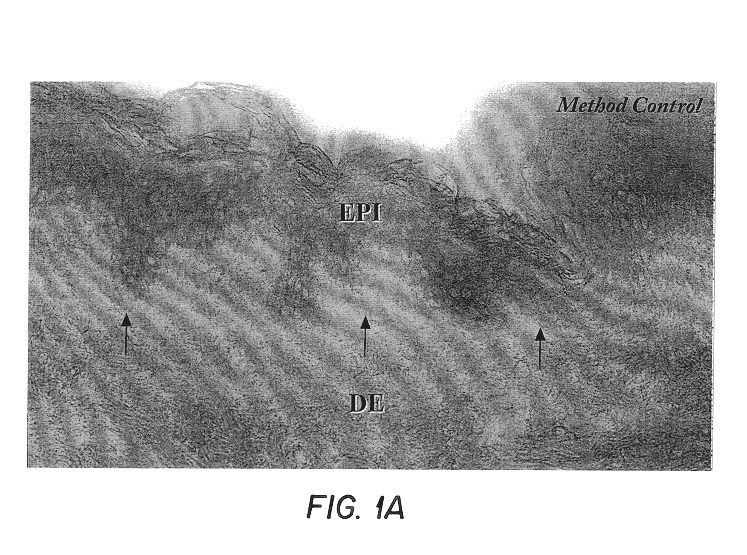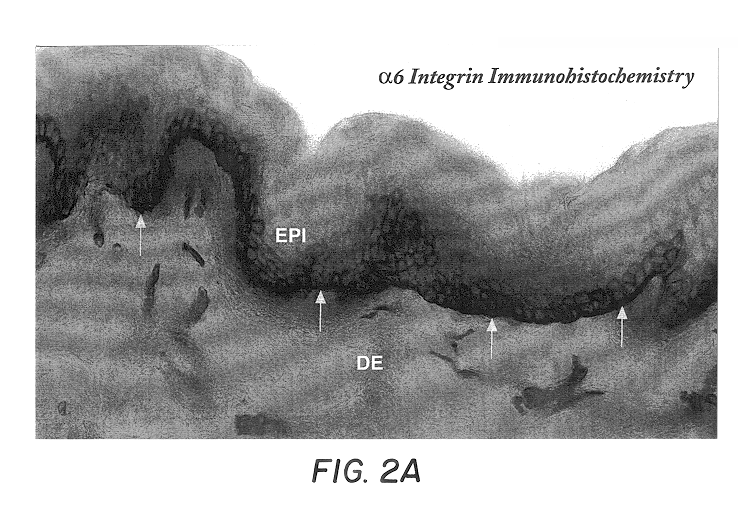Free floating cryostat sections for use in light and electron microscopy and method
a cryostat and free floating technology, applied in the field of specimen viewing, can solve the problems of inability to view the exact same tissue sample with both devices, no medium has been developed, and the comparison of two separate samples is inherent limitation
- Summary
- Abstract
- Description
- Claims
- Application Information
AI Technical Summary
Benefits of technology
Problems solved by technology
Method used
Image
Examples
example 1
Fresh skin samples frozen in the chlorodifluoromethoane refrigerant Freon 22 were sectioned at 60.mu. and individually placed in wells filled with cryoprotectant solution as formulated by deOlmos and colleagues. DeOlmos, J. S., H. Hardy and L. Heimer: (1978) J. Comp. Neurol. 181: 213-244. Immunohistochemistry was performed using the avidin-biotin-peroxidase complex (ABC) method described by Hsu and coworkers. Hsu, S-M, L. Raine and H. Fanger (1981) J Histo Cyto. 29(4): 577-580. The steps of immunohistochemistry are as follows:
Sections were washed thoroughly in three changes of PBS to remove excess cryoprotectant solution, and sequentially incubated in 5% normal serum, primary antibody, biotinylated-secondary antibody, ABC solution and DAB. Primary antibodies used were .alpha.6 integrin (1:100), laminin (1:100), collagen type IV (1:100) and collagen type VII (1:100). All secondary antibodies were applied at dilutions of 1:200. Sections processed without primary antibody were used as ...
PUM
| Property | Measurement | Unit |
|---|---|---|
| thick | aaaaa | aaaaa |
| volume | aaaaa | aaaaa |
| thickness | aaaaa | aaaaa |
Abstract
Description
Claims
Application Information
 Login to View More
Login to View More - R&D
- Intellectual Property
- Life Sciences
- Materials
- Tech Scout
- Unparalleled Data Quality
- Higher Quality Content
- 60% Fewer Hallucinations
Browse by: Latest US Patents, China's latest patents, Technical Efficacy Thesaurus, Application Domain, Technology Topic, Popular Technical Reports.
© 2025 PatSnap. All rights reserved.Legal|Privacy policy|Modern Slavery Act Transparency Statement|Sitemap|About US| Contact US: help@patsnap.com



